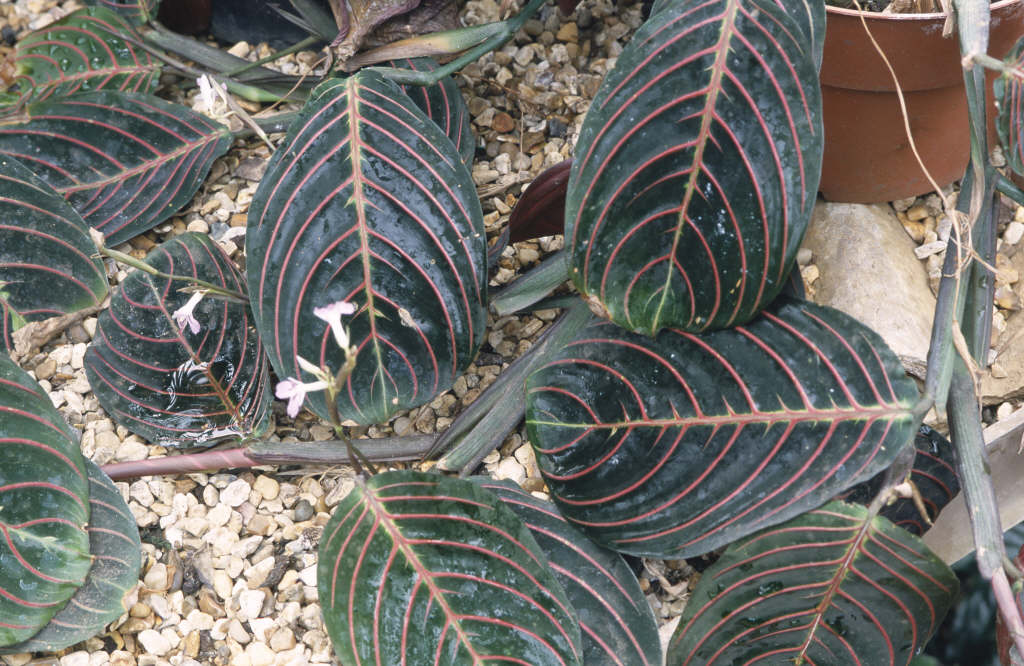Maranta leuconeura var. erythroneura
herringbone plant
A rhizomatous perennial to 30cm, forming a clump of broadly elliptic, dark olive-green leaves with a bright green central zone and bright red midrib and main veins

Buy this plant
Size
Ultimate height
0.1–0.5 metresTime to ultimate height
2–5 yearsUltimate spread
0.1–0.5 metresGrowing conditions
Moisture
Moist but well–drainedpH
Acid, Alkaline, NeutralColour & scent
| Stem | Flower | Foliage | Fruit | |
| Spring | Bronze Green Red | |||
|---|---|---|---|---|
| Summer | White | Bronze Green Red | ||
| Autumn | Bronze Green Red | |||
| Winter | Bronze Green Red |
Position
- Full shade
- Partial shade
Aspect
West–facing or East–facing or South–facing
Exposure
Sheltered Hardiness
H1ABotanical details
- Family
- Marantaceae
- Native to GB / Ireland
- No
- Foliage
- Evergreen
- Habit
- Clump forming
- Genus
Maranta are evergreen, rhizomatous perennials with blunt, broadly elliptic leaves often attractively marked or veined in contrasting colours; insignificant small white flowers are borne in racemes just above the foliage
- Name status
Correct
How to grow
Cultivation
Under glass grow in peat-free potting compost in bright indirect. Water moderately when in growth and keep just moist in winter. Apply a balanced liquid fertiliser monthly when in growth. In frost-free areas may be grown outdoors in most moderately fertile, humus-rich soils in deep or partial shade
Propagation
Propagate by seed sown at 13 to 18°C as soon as ripe or by division in spring
Suggested planting locations and garden types
- Patio and container plants
- Low Maintenance
Pruning
No pruning required
Pests
May be susceptible to glasshouse whitefly and glasshouse red spider mite
Diseases
Generally disease-free
Get involved
The Royal Horticultural Society is the UK’s leading gardening charity. We aim to enrich everyone’s life through plants, and make the UK a greener and more beautiful place.